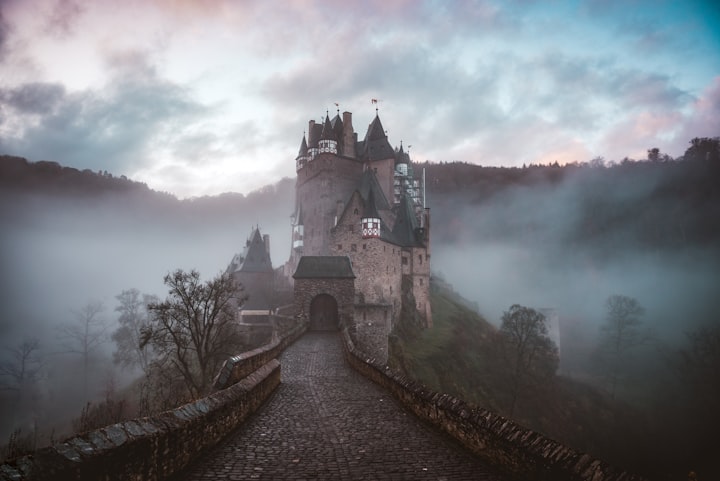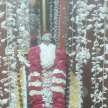Dracula
"Bloodlust Awakens: Unveiling the Dark Desires of Dracula"

"Dracula," the classic Gothic novel written by Bram Stoker, has left an indelible mark on literature and popular culture since its publication in 1897. The novel, set in the late 19th century, is a tale of horror, suspense, and the supernatural. Through its unique narrative structure, which consists of journals, letters, newspaper articles, and ship's logs, "Dracula" explores themes of fear, sexuality, and the clash between modernity and ancient superstitions.
**Plot Summary:**
The novel begins with Jonathan Harker, a young English solicitor, traveling to Transylvania to assist Count Dracula in the purchase of an estate in England. As Harker delves deeper into Dracula's mysterious world, he realizes that he is a prisoner in the Count's castle. Dracula, portrayed as a charismatic yet sinister figure, eventually travels to England, bringing with him a reign of terror and vampiric contagion.
The narrative unfolds through a series of journal entries and letters written by Harker, his fiancée Mina Murray (later Harker), her friend Lucy Westenra, and other characters. Lucy becomes the first victim of Dracula's bloodlust, and her friends, including Professor Abraham Van Helsing, embark on a quest to stop the vampire and save Mina.
The novel explores the nature of vampirism, depicting Dracula as both a seductive and repulsive figure. The Count is portrayed as a powerful, shape-shifting entity with the ability to control and manipulate others. As the characters race against time to stop Dracula's spread of vampirism, the narrative weaves together themes of Victorian anxieties, forbidden desires, and the struggle between good and evil.
**Characters:**
- **Count Dracula:** The enigmatic and malevolent vampire who seeks to spread his influence in England. Dracula is a complex character, embodying both charm and horror. His immortality and supernatural powers make him a formidable adversary.
- **Jonathan Harker:** A young English solicitor who becomes a prisoner in Dracula's castle. Harker's journal entries provide the initial narrative perspective, detailing his growing realization of the danger posed by Dracula.
- **Mina Harker (née Murray):** Jonathan Harker's fiancée and later wife. Mina becomes a central figure in the quest to stop Dracula's nefarious plans. Her intelligence and resourcefulness make her a key character in the fight against the vampire.
- **Lucy Westenra:** Mina's friend who falls victim to Dracula's vampiric attacks. Lucy's transformation into a vampire sets the stage for the characters' pursuit of Dracula to save Mina.
- **Professor Abraham Van Helsing:** A Dutch doctor with expertise in obscure diseases and folklore. Van Helsing becomes the leader of the group dedicated to thwarting Dracula's influence. His knowledge of vampires and determination make him a crucial ally.
- **Arthur Holmwood:** Lucy's suitor and later husband. Arthur is devastated by Lucy's fate and joins the group led by Van Helsing to confront Dracula.
- **Quincey Morris:** An American and one of Lucy's suitors. Morris plays a significant role in the group's battle against Dracula. His bravery and loyalty make him a memorable character.
**Themes:**
1. **Fear and Superstition:**
The novel explores the impact of fear and superstition on the characters and society. The Victorian era was marked by a fascination with the supernatural, and "Dracula" reflects the anxieties surrounding the unknown. The characters grapple with their rational beliefs in the face of the supernatural threat posed by Dracula.
2. **Sexuality and Repression:**
Stoker uses vampirism as a metaphor for forbidden desires and sexuality. Dracula's bites, often described in sensual terms, evoke a sense of eroticism. The Victorian society's repressive attitudes toward sexuality are mirrored in the characters' struggle against the vampiric allure.
3. **Colonialism and Otherness:**
Dracula, a foreign entity from Transylvania, represents the fear of the unknown and the "other." The novel reflects colonial anxieties prevalent during the Victorian era, where the unfamiliar and foreign were often viewed with suspicion. Dracula's invasion of England serves as a metaphor for the fear of cultural invasion.
4. **Modernization and Tradition:**
"Dracula" explores the clash between modernity and ancient superstitions. The characters, representing the modern Victorian society, confront a centuries-old vampire who embodies archaic beliefs and practices. Van Helsing, with his scientific knowledge, becomes a bridge between tradition and modernization.
5. **Good vs. Evil:**
The novel presents a classic struggle between good and evil. Dracula, as a representation of evil, challenges the moral convictions of the protagonists. The group led by Van Helsing becomes a symbol of goodness, courageously fighting against the malevolent force threatening to engulf society.
**Literary Significance:**
"Dracula" is a seminal work that has influenced countless adaptations, including films, television series, and other literary works. Stoker's creation of the vampire Count Dracula has become an enduring archetype in horror literature. The novel's epistolary format, combining various narrative voices, adds a layer of authenticity and immediacy to the horror.
The novel has also been analyzed for its cultural and historical significance. Scholars have explored how "Dracula" reflects Victorian societal norms, anxieties, and the cultural fascination with the supernatural. Stoker's use of folklore and mythology contributes to the enduring appeal of the vampire as a literary and cultural symbol.
**Adaptations and Legacy:**
"Dracula" has inspired numerous adaptations in various media, solidifying its place in popular culture. Countless films, from the classic "Nosferatu" (1922) to Francis Ford Coppola's "Bram Stoker's Dracula" (1992), have brought the vampire myth to the silver screen. Television series, stage plays, and even contemporary novels continue to draw inspiration from Stoker's original work.
The character of Count Dracula has become synonymous with vampires in general, shaping the popular perception of these mythical creatures. The vampire genre, with its themes of eternal life, forbidden desires, and the struggle between darkness and light, owes much of its modern incarnation to Stoker's "Dracula."
**Conclusion:**
"Dracula" remains a timeless masterpiece that continues to captivate readers with its blend of horror, suspense, and exploration of complex themes. Bram Stoker's creation of Count Dracula has left an indelible mark on literature and popular culture, making the novel a cornerstone of the horror genre. As readers delve into the atmospheric world of "Dracula," they encounter not only a thrilling tale of supernatural terror but also a reflection of the societal fears and desires that permeated the Victorian era.






Comments (2)
💞 thank you bro
Thumbs up for your effort! Keep the outstanding work